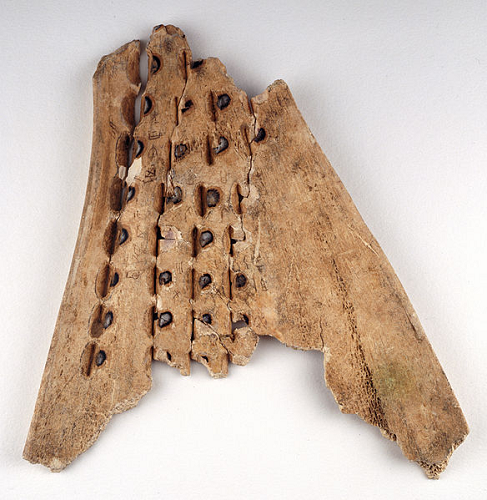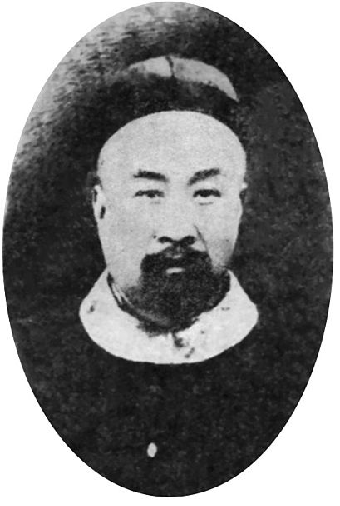

The truth about ancient cultures across the world is known via numerous means like written documents. rituals, beliefs, coins, carbon dating, poems, and stories. A prominent example of the process is the study of Vedic and post-Vedic cultures. Although the period dates back to 1500 BCE, we find evidence of political structure, traditions, military strength, agricultural grains, trade, rituals, etc. All this is studied via literary means like the Vedas, or through archaeological finds like the burials.
The most authentic means to study the ancient past is archaeological evidence. A primary example of this is the study of oracle bones in China. These bones have inscriptions engraved on them which provide us with information about the period of 1600 BCE. It gives us valuable information about the ancient Shang dynasty of China and what their rituals, politics, traditions, military, and economy looked like.
The period from 1600 BCE to 1050 BCE is said to be the age of the Shang dynasty in China.
This empire ruled the northern part of China along the Yellow River, with Anyang as their capital from 1300 BCE to about 1050 BCE.
The King and his people worshipped a deity known as Di, who controls the universe. And the king was the only person capable of contacting the deity. It was considered that he did so via his royal ancestors.
Ancestor worship was very prevalent during the Shang dynasty's rule. Wines and food were offered to the ancestors to ensure their blessings over the future generations of the family. This tradition of ancestral worship continues to this day in modern communist China.
Bronze was a critical metal used at the time. Bronze utensils have been found in the tombs of ancestors, probably used to devote food and wine. It was also used in making weapons and tools for agricultural production.
The method of dynastic succession continued for many centuries even after their end. And so did the political institutions put into place.
Finally, it was the Zhou people that destroyed the Shang dynasty in the millennium before the common era. Weak leadership and military were the probable causes for their decline from a position of such strength.
The term “oracle bone” refers to ox scapulae (or shoulder blade bones) and tortoise shells used by Shang rulers for divination, i.e. to gain knowledge about the vents of the future.

Oracle Bones
British Library, CC0, via Wikimedia Commons
These bones had inscriptions upon them dating back to the ancient Chinese Shang dynasty. The meaning of these inscriptions has not been deciphered completely yet.
It was first discovered by the local farmers in their fields. But they had no knowledge about the odd bones and hence put them in the ground.
During the 19th century, some traditional medicine practitioners found a use for them. These bones began to be used as a treatment for malaria. Hence these were crushed and given to patients.
Wang Yirong the Chancellor of the Imperial Academy in Beijing was the first person to recognize the inscriptions on these bones and their significance.

http://ztwww.zjlib.net.cn/pics/listv.asp?id=1295, Public domain, via Wikimedia Commons
Finally, in the 20th century, the news of the discovery of oracle bones spread like wildfire in China. Collectors and academicians from across China flocked to get hold of these bones. Later these events led to a greater study of these bones and their connection with the Shang dynasty and its rituals.
The inscriptions deciphered from the oracle bones display a series of texts written upon it. It mentions the questions asked and the result of the event asked about.
The Shang dynasty, as mentioned above, used the bones for divination. These bones were said to allow a channel to the royal ancestors, deities, and other powerful spirits.
Hence the rulers of the Shang dynasty questioned the dreams, natural disasters, diseases, vision, and future military and hunting ventures.
The Shang dynasty kings ordered the inscriptions to be made.
First, the bones were cleaned, scraped, smoothened, and polished. Usually, tortoise shells or ox scapulae were used, because of their relatively flat surface. However, a few shreds of evidence of horses, boars, cows, sheep, etc have been found.
The ritual begins with the diviner inserting a heated rod at the bottom of the grooves. Thus, cracks would be formed on the opposite of the shells.
Following this, the scribe would carve the question of the king onto the bone or shell surface. Later, the scribe would also carve out the outcome of the questions asked.
These oracle bones usually have a four-part inscription −
The Introduction
The topic of the carving
Then the interpretation of the carvings
Finally the result of the predictions
The oracle bones are one of the most critical and mysterious pieces of Chinese history. Before the discovery of these bones, the entire existence of the Shang dynasty was brought into question by many scholars. However, the discoveries made in the 19th and 20th centuries finally removed the confusion.
The oracle bones have over 5000 characters, however, only 1200 of them have been deciphered so far. It was only in the 20th century that national and global interest rose. Researchers from Britain, France, and other countries of Europe flocked to China to study these remains. Eventually, many papers were published describing the inscriptions on the bones. This helped study the political structure, traditions, rituals, and military of the Shang dynasty. Even after the Shang dynasty collapsed the Zhou kingdom continued to use the traditional oracle bones. Even in modern Chinese culture ancestral worship and offering are prevalent, especially in the Yellow river valley.
Q1. Is the oracle bone tradition found in India?
Ans. No, there is no substantial evidence of the specific tradition being followed in India. However, there are some bones with inscriptions found in the western part of the subcontinent.
Q2. How did Wang Yirong die?
Ans. Wang Yirong committed suicide in relation to the Boxer Rebellion of China in the year 1900. This rebellion was against foreigners from 1899 to 1901.
Q3. Why were the bones of dogs and cats not used?
Ans. The bones of dogs and cats are extremely small. This would make it difficult to engrave on their surface and the chances of survival of these bones were also relatively smaller.
Q4. Did the prediction given in the inscription always come true?
Ans. No, the predictions inscribed on the oracle bones didn’t always come true. The result of the forecasts was also carved on the bones and it proved that the predictions were not 100%correct.
Q5. How did we learn about the period of 1600 BCE in India?
Ans. The knowledge Vedic age in India was acquired primarily by the Vedas. Then came other valuable sources like artefacts, literal texts, bones, archaeological evidence, etc.